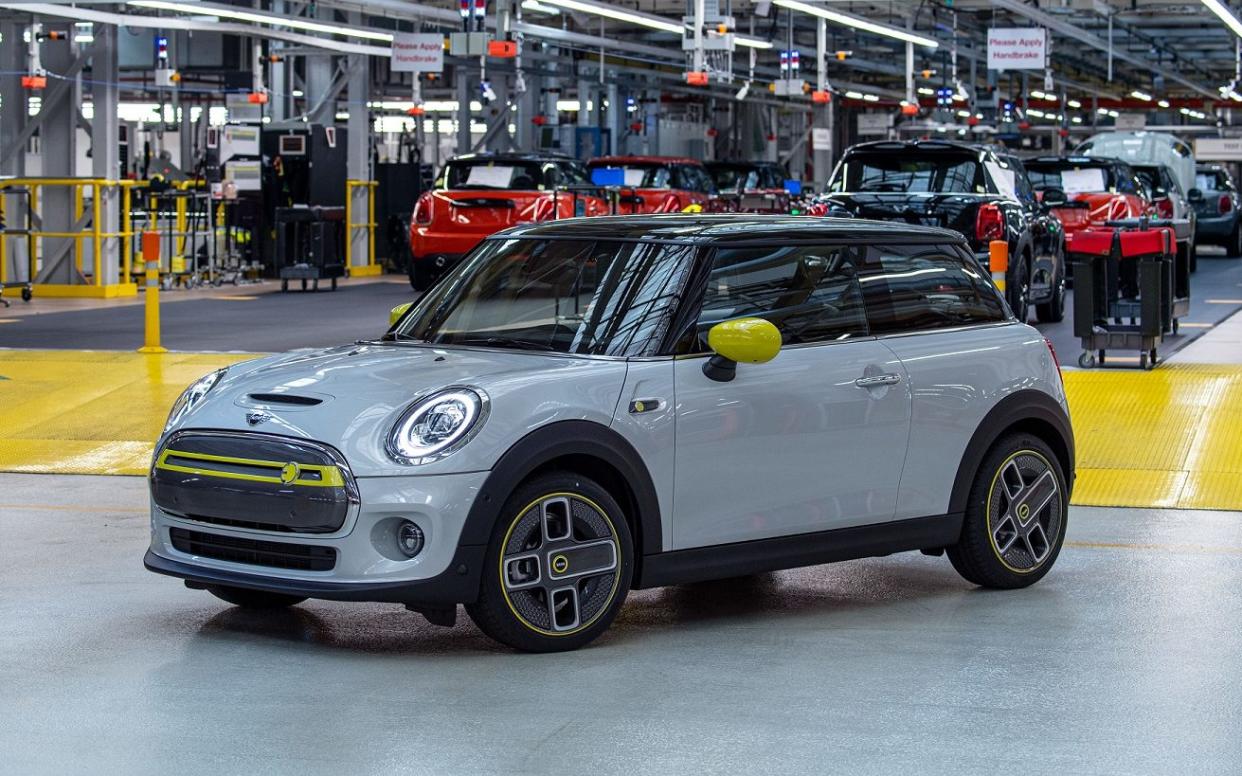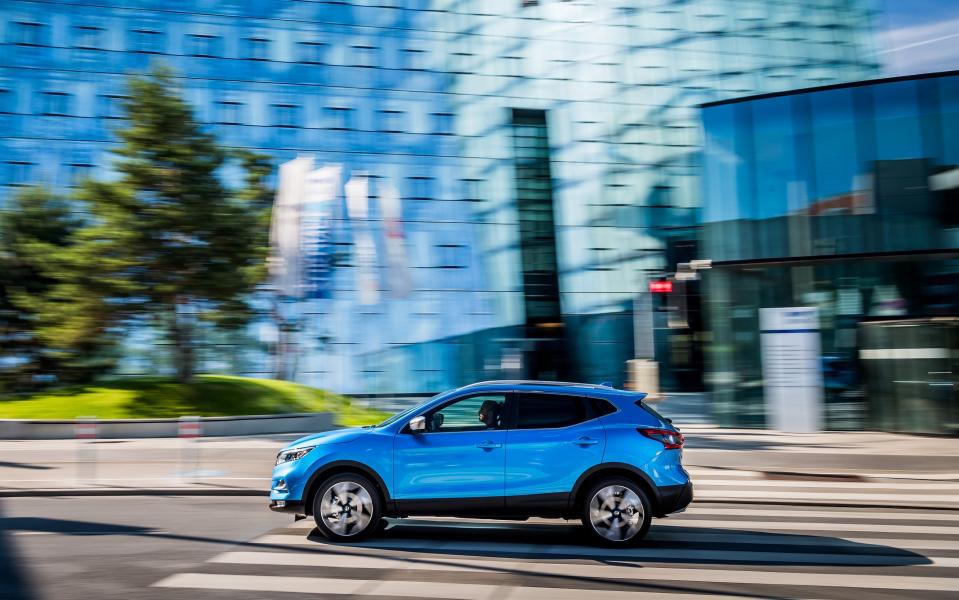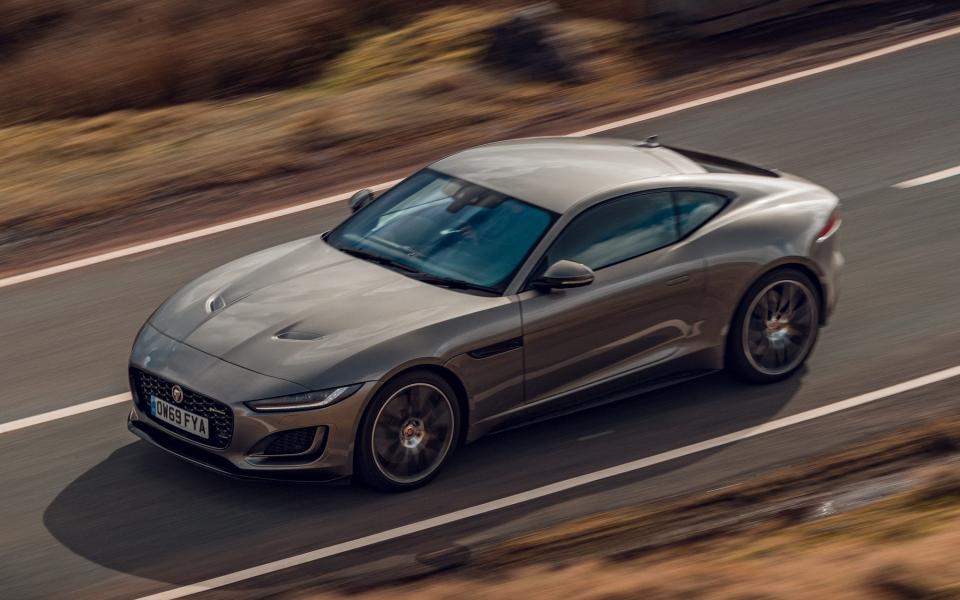Honest John: is electric Mini claim of 140-mile range misleading?

If your car has developed a fault, or for consumer advice, turn to Honest John by emailing honestadvice@telegraph.co.uk
Short circuit
We purchased a new Mini Electric. They advertise a 140-mile range, but the most we can achieve is 90 miles. Is this a fault, or is the advertising misleading? TE
The official WLTP range is “up to 145 miles”. You won’t get that in winter because the ambient temperature is too low for the battery to work at peak efficiency and also because you’ll use more accessories that are powered by the battery, such as the heater. Driving carefully you should get closer to 140 miles in the summer.
Heart and Seoul
I have up to £12,000 to spend on a used replacement for my Ford Fusion. I would probably go for a Fiesta because I have the impression that they are reliable and easy to maintain. I do not need fancy gadgets or an engine that switches off at traffic lights. I need five doors for ease of fitting my grandson into his child seat. Am I right in thinking that I need something pre-2017 to avoid annual tax? FM
VED is only free for cars first registered before March 31 2017 if they emit less than 100g/km of CO2. After that it goes up in steps starting at £20pa for cars emitting 101-110g/km. For cars registered on or after April 1 2017, only those emitting 0g/km CO2 are VED exempt. Beyond that it's a straight £155pa for all, though cars originally costing £40,000 or more are stung with a £335 luxury tax, bringing the bill for them to £490 a year. If I was you I'd look very seriously at either a Kia Picanto with some of its seven-year manufacturer warranty remaining, a Hyundai i10 or a Toyota Yaris (both warranted for five years). Cars that start life with long warranties tend to generate the fewest complaints. Buyers are too often swayed by misguided perceptions of status.
PM’s question time
I maintained the battery on my 2016 Suzuki 1.4 Vitara Allgrip using a C-TEC battery smart charger/conditioner. In September 2020 I replaced the car with the 48v mild hybrid version and asked C-TEC if it was OK to continue using the charger on the hybrid system. They referred me to Suzuki, who advised running the engine for 15 minutes a month with the headlights on. This might well charge the 48-volt lithium-ion battery, but I fail to see that it will help the 12-volt battery to maintain charge or condition. Also, it cannot help either fuel economy or the environment. How should I proceed? PM
The 12v battery gets its charge from the 48v lithium battery via a converter. The same advice you were given also applies to self-charging hybrids, such as the Toyota Prius. Putting the headlights on forces this to happen.
Lofty conversion
My wife and I are retired and are looking for one car that suits us both. Our problem is that I am over six feet tall while my wife is under five, so we are struggling to find a vehicle we can both comfortably operate. For example, my current VW Golf has a fully adjustable driver's seat and steering column, but my wife cannot find a position where she can steer, see and have her feet safely in contact with the floor at the same time. Any suggestions? PC
I've had that problem and the solutions were an original Toyota Yaris and a Honda Jazz II, while another was a Mini R55 Clubman. Cars with reasonable seat height adjustment and a good view include the Kia Venga and Hyundai ix20. The latest Toyota Yaris hybrid also has height-adjustable front seats for both driver and passenger, so that might be ideal.
Nissan crash cry

My 11,000-mile Nissan Qashqai Tekna 1.5 dCi/115 EDC automatic has developed a disturbing fault which is becoming progressively more acute. When engaging Drive, unless the accelerator is very carefully operated, it catapults you forward or backwards in an alarming manner, thus putting you in danger of an accident. The car has had four visits to the dealership and the factory sent some new software, which was fitted to no avail. The message I received from the dealer, on behalf of Nissan, was that, "They are all like that and there is nothing further that can be done about it." Any ideas? CM
Your Qashqai has the same drivetrain as the Renault Kadjar, including its seven-speed Efficient Dual Clutc (EDC) transmission. This is also used in the Mercedes A-Class and Dacia Duster. It is not a torque converter transmission, so you cannot rely on gentle torque converter slippage. These EDCs are not particularly nice to drive, but your car’s should not be so abrupt as to be almost uncontrollable. The dealer must try harder.
Burning desire
I own a two-year-old Jaguar XJ with the 3.0 V6 EU6 diesel engine that has known oil dilution problems. For the last four months of lockdown I have only been able to do short journeys for shopping and am getting concerned about the amount of diesel dilution that may be occurring in the engine oil. I am due to have my Covid 19 vaccination soon, which will mean a 45-mile round trip mainly on the motorway. Using the Sport mode I intend to run the car at 2,500-3,000rpm to induce a passive regeneration of the DPF. Is this likely to do the engine any damage? Also, are there any tell-tale signs on the car that might indicate that a regeneration is in progress? TW
I'm a little surprised that you have not experienced any active regenerations, where fuel post-injected via the engine starts a fire in the DPF to burn off the soot. You would normally be aware of that by feeling and smelling heat under the car when you got out. If you repeatedly switch off the engine when it is actively regenerating, that is how the engine suffers oil dilution with diesel and a rising oil level. If you can't get the oil changed before your journey, there is a chance that, by encouraging it to passively regenerate as you describe, you might get the active regeneration system working again. You can tell when this is happening by setting the fuel consumption readout to “instant” – you will see consumption rise due to the post-injected fuel being fed into the particulate filter.
Pennine way

In October 2020 my wife took delivery of an Audi Q2 on a three-year lease limited to 8,000 miles a year. We live in the Pennines with an abundance of hills, for which the Audi is totally unsuited in snow. As I expect it to require one new set of tyres during the lease period I am considering investing in some all-weather rubber for the winter months and alternating with the original Michelin 215/55 R17s. Is this a good idea? EA
I'd leave all-weather tyres on all the time because they give better steering feel, improved ride comfort and are generally quieter. Swapping twice a year runs the risk of tyre and rim damage. When you return the car, send it back on the original summer tyres. Look at Michelin Cross Climate, Continental AllSeason Contact, Goodyear Vector 4-Seasons or Vredestein Quatrac. Also, Pirelli has just launched a new range of all-weather tyres that can be filled with an inert mousse, making them relatively puncture-proof.
Niro fuddled
I have a Kia Niro self-charging hybrid on a personal lease, which is coming up for renewal. Due to various factors, not least Covid 19, I have only done 8,000 miles in three years. I can either pay it off and keep it, or start again with a new car and a seven-year warranty, which would take me towards the end of my driving days. I am quite happy with the Niro and would certainly have another. What do you think? TH
You could swap to a Niro PHEV (Plug-in Hybrid Electric Vehicle) that has an electric range of up to 36 miles. That would probably make the most sense for such low mileage (as long as you can install a wallbox at your home to plug it in). Otherwise, keep the existing Niro. With only 8,000 miles, it should be worth more than the price agreed at the start of your PCP and the car still has four years of its original warranty.
Hard times

I’ve owned two Jaguar XKs. I kept both for seven years and loved them – grand tourers that also worked well in town. Last year I traded the second for a Jaguar F-Type Chequered Flag limited edition. It’s fine, but the suspension and ride feel very firm in comparison to the XK. Can any adjustments be made to give a less harsh ride? PS
First make sure the suspension transportation clamps are not still attached to the springs. Second, check the wheel and tyre sizes. If the car is on 21-, 20- or 19-inch wheels with 30- or 35-profile tyres, change to 18-inch wheels so you can fit deeper profile rubber that gives a more compliant ride. If you change the wheel size, you must inform your insurer.
You’re barred...
PF’s letter about unused towbars is right to warn other drivers to keep their distance from such dangerous protrusions. Towbars should be removed when not in use. WP
When PF chastised me for being “precious”, I replied that two of my cars (both parked) had been seriously damaged by vehicles with fixed towbars reversing into them. I got the money from one of the guilty parties’ insurers (£1,600), but had to stand the cost of the other incident myself.
Read Honest John’s latest column on telegraph.co.uk every Friday from 10am
For tips and advice, visit our Advice section, or sign up to our newsletter here
To talk all things motoring with the Telegraph Cars team join the Telegraph Motoring Club Facebook group here

